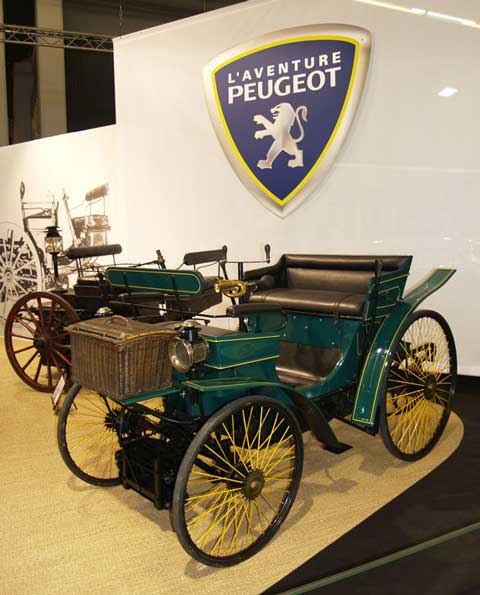
This turn of the century tiller Peugeot was typical of their 19th century products. Five cars were sold in 1891 and by 1899 the firm was selling over 300 cars per year. The history of Peugeot tracks the entire history of the automobile from three wheel steam cars of the 1870s to the energy efficient cars of the 21st century.
Photographs by Alessandro Gerelli
Text and captions by Pete Vack
Although an international event, Retro is nevertheless a French event first and foremost. The automotive history of France may have more length, depth, variety, and engineering excellence than any other country in the world.
French automobiles range from the huge to the tiny, the most luxurious to the most Spartan, the fastest to the slowest; from the most conventional to the most extreme, from Le Mans puddle jumpers to Grand Prix Formula 1 champions.
Take, for example, Peugeot, an ancient company that made iron goods long before the automobile, and made automobiles long before (1890) almost anyone else; Peugeot won at Indianapolis three times; and, it is still one of the largest automobile companies in Europe. Peugeot runs through our story in a most remarkable way.
Gerelli’s visit to Retro this year resulted in the following, very abbreviated walk through the history of the French automobile.
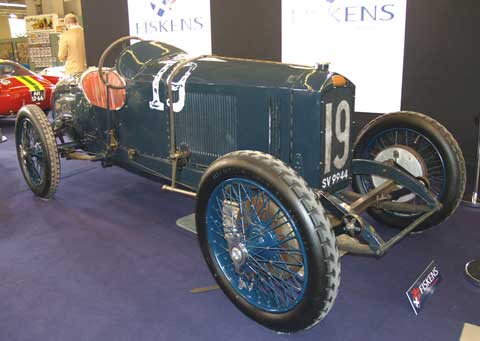
The engineering progress was remarkable. Less than fifteen years after the tiller car above, in 1913, Peugeot race cars such as this 3 liter Indy/Grand Prix car were winning events all over Europe and the U.S. Jules Goux won with a 5.6 liter DOHC Peugeot in 1913, and in 1914 Arthur Duray took second with a 3 liter “baby†Peugeot like the one above.
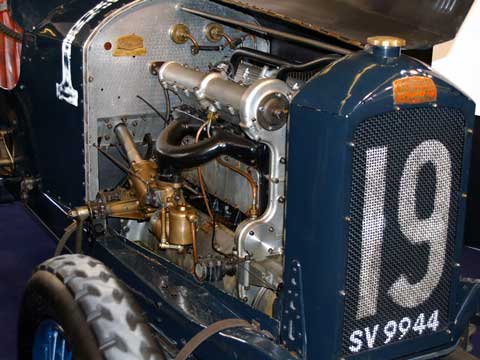
Peugeot’s remarkable power plant that led directly to the American Miller and thusly to the famous Meyer Drake Offenhauser. Even more remarkable was the Peugeot four cam V8 designed for aircraft used during WWI. Not the gear driven DOHC setup.
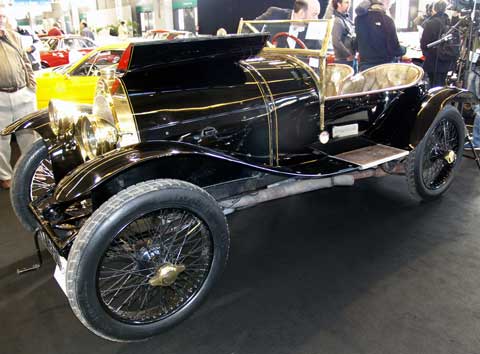
Bugatti historian Jonathan Wood has proposed that the 5 Liter 3 valve chain-driven Bugatti Type 18 was built on the request of Robert Peugeot as “a safety measureâ€, a back up in case the extremely advanced design of the DOHC Peugeot (above) did not prove successful. This particular Bugatti is the well-known “Black Bessâ€.
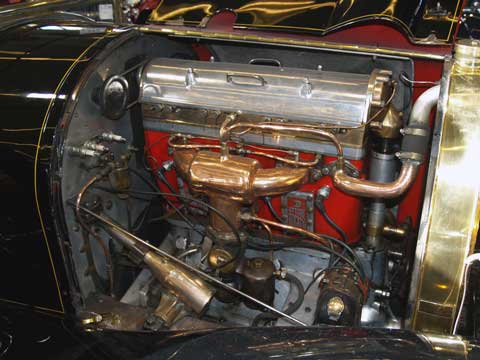
Bugatti’s claim to fame before WWI rested on the design of small cars, such as his 1327cc four cylinder and the 855cc “Bebe†Peugeot. But the Type 18 of 1913-4, often called the “Garros†model, was a huge, 5 liter engine. It was entered in the 1914 Indy 500 but retired.
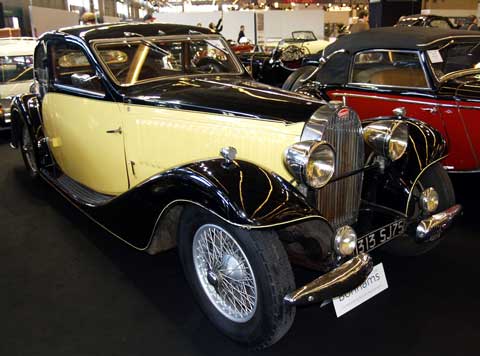
Despite the overwhelming proof of the superiority of the DOHC engine, it took Bugatti 17 years before he switched from his SOHC eights to a DOHC design, first seen on the 1930 Type 50. Here, the Bugatti DOHC eight powers a 1934 T57 by Ventoux. Ironically, Bugatti was influenced by the 122 ci Millers which in turn had been influenced by the Peugeot and Ballot racing engines of 1912-14.
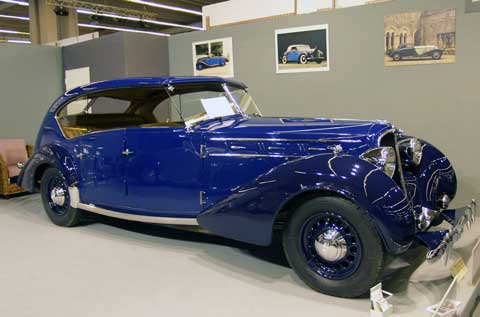
Remember the Delage “Aerosport“? Here is the same idea but on a 1936 Delahaye. The coachbuilder was Labourdette, and the pillarless effect extends to the A post as well. The design was appropriately called “Vutotalâ€. Delahaye, Delage, Hotchkiss and Talbot represented the large luxury class of conservative French cars made from roughly 1920 to 1950
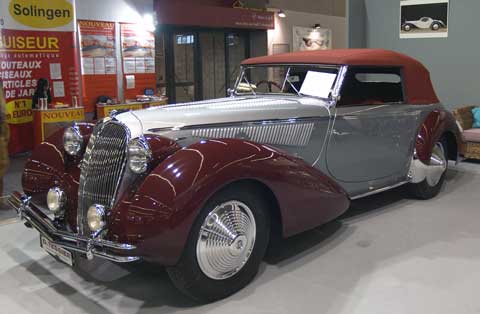
Another Delahaye, this one on the 135 M chassis and again bodied very conservatively by Figoni et Falaschi. WWII had just ended, and this 1946 model was a straight continuation of the pre-war offerings. Their glory days were about to end.
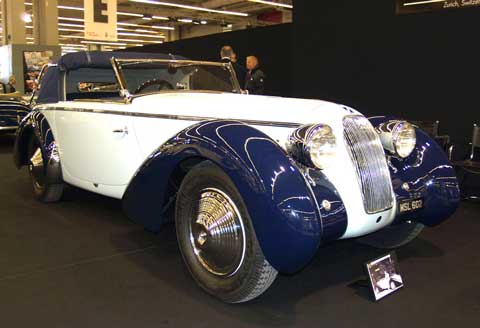
The history of the Anglo-French Sunbeam-Talbot-Darracq group is far too complex for a caption; a book would be just a start. Suffice here to relate that Talbot, aka Darracq in the UK, was a luxury sport model bodied by the great coachbuilders, here in a very conservative mode by Figoni et Falaschi in 1938. More familiar are the flamboyant Figoni et Falaschi coupes of the late 1930s (See “Stinky, Quail‘s Most Interesting Carâ€).
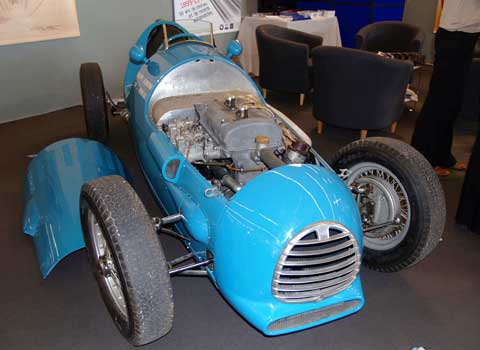
Gordini began to modify Simca/Fiats before WWII, and afterward became a race car constructor. This Type 15, a 1490 cc Formula 2 car of 1948, was driven by racing greats J.P. Wimille, Maurice Trintignant, and Raymond Sommer. Like the Maserati brothers, Gordini did not build cars for the road.
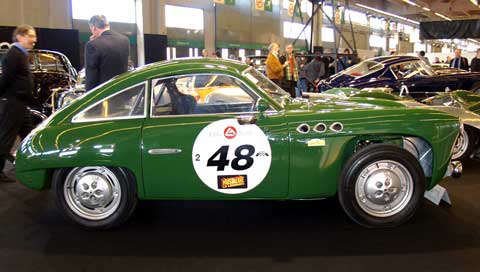
After WWII, taxes, high oil prices, a terrible economy and a socialist government forced car companies to think small. Charles Deutsch joined forces with Renee Bonnet to create the Panhard based Deutsch-Bonnets. The coupe displayed at Retro was the first real production car from the tiny Parisian firm. See our four part Deutsch-Bonnet at Sebring for more information about the D.B.
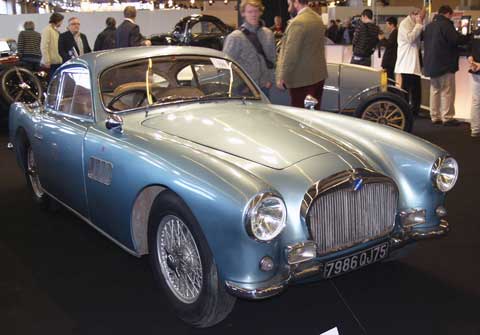
Delage folded in about 1953, Delahay in 1954, Hotchkiss and Bugatti were already gone, but Talbot valiantly tried to keep the luxury sports car alive with this attractive Talbot Lago coupe from the mid 1950s. But Facel Vega did the same job with more class, and Talbot became just a badge name under Simca.
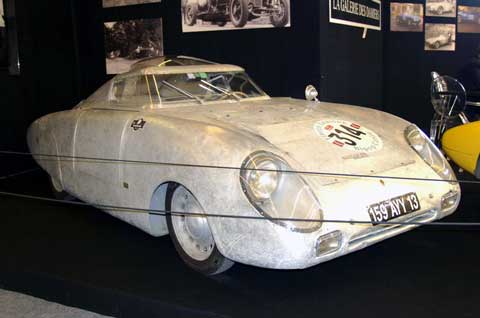
Autobleu was one of several tiny French manufacturers who worked with the Renault 4CV, providing more attractive bodies. In 1954, an Autobleu driven by Signrand and Bianchi entered the Mille Miglia, with a 4CV with a special body by the French coachbuilder Chapron. The 750 Sport International class, however, was won by the Panhard of Faure-Storez.
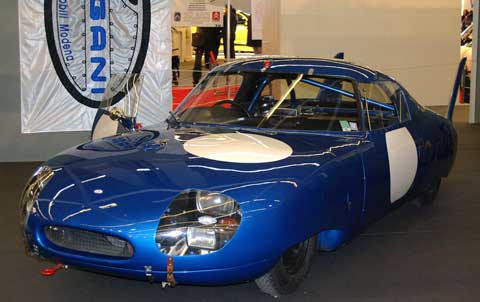 In 1964, the under 1 liter puddle jumpers were banned at Le Mans, putting a end to the Panhard Index victories. So in 1964, Charles Deutsch created this Panhard engined 848 cc streamlined race car which was capable of 137.5 mph with only 70 hp. Read more on this car–“CD and the Last Racing Panhard“.
In 1964, the under 1 liter puddle jumpers were banned at Le Mans, putting a end to the Panhard Index victories. So in 1964, Charles Deutsch created this Panhard engined 848 cc streamlined race car which was capable of 137.5 mph with only 70 hp. Read more on this car–“CD and the Last Racing Panhard“.
Wonderful coverage of Retromobile – an event on my “must do someday” list.
I should point out that the second place drive by Duray in the 3 liter Peugeot at Indianapolis took place in 1914, not 1915. Dario Resta finished second in the 1915 500 in the larger, 4.4 liter Peugeot.
Keep the French car coverage coming, it’s much appreciated.
Woody Woodhouse
Mr. Woodhouse is correct, and we have made that change to the caption; thank you for catching the error and for reading VeloceToday. Yes, we have more French topics coming!
Pete Vack
For a fascinating and humorous look at French engineering, track down a two-volume set of “French Aviation Between the Wars.” It seems like there was an unwritten law aainst designing a “normal-looking” airplane. And Pete, I should have a bunch of my books in a week or so!
Ho da poco comperato una DELAHAYE TYP 122 FAUX CABRIOLET del 1932,da riparare.Potete per favore fornirmi qualqe maeriale o indirizzo per eventuali ricambi che possono essere necessari alla riparazione?Grazie.(non parlo francese,solo un po di inglese)
Hello.Me to bought DELAHAYE 122 FAUX CABRIOLET 1932 year,to repair.Can YOU please help me abbout spear parts or dokumentation for repar.I speak italian and a leatle english.Thank YOU.